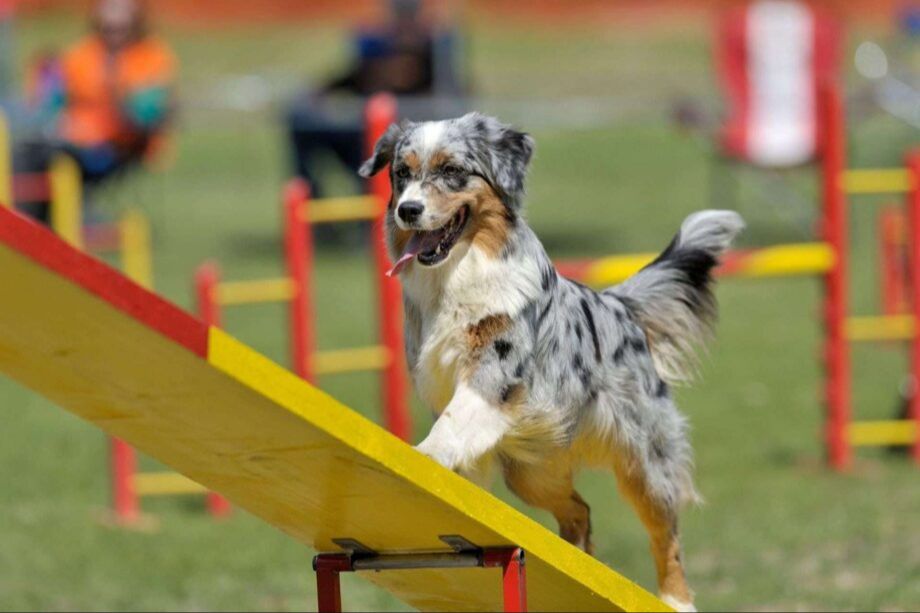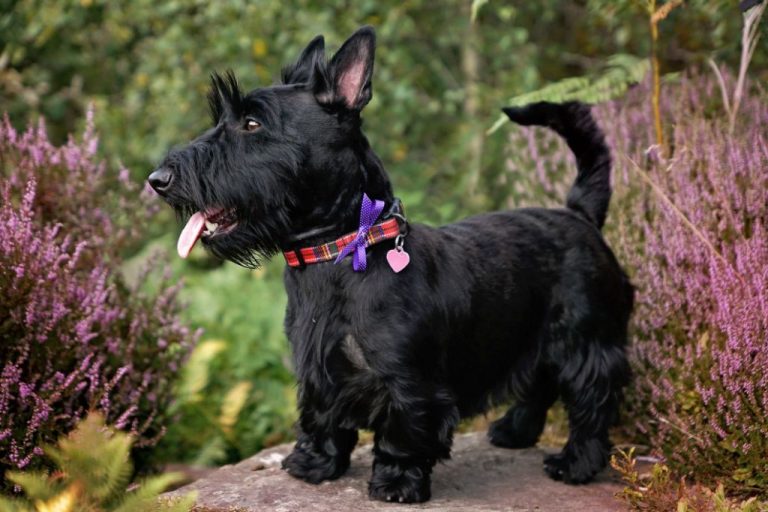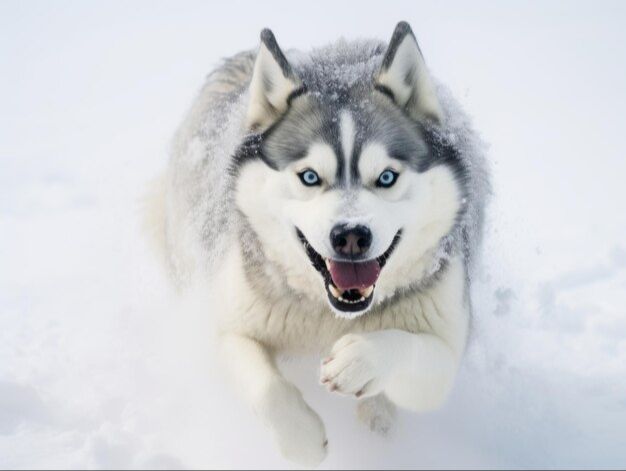Australian Shepherd: Traits And Temperament Of An Energetic Breed
The Australian Shepherd is a popular herding breed known for its intelligence, energy, and loyalty. With origins tracing back to the Basque region in Europe, the breed emerged in the western United States in the 19th century when Basque shepherds brought their dogs with them. While the name ‘Australian Shepherd’ is misleading, it refers to their association with American ranchers and adoption in Australia after World War I. Today, Australian Shepherds are beloved family companions and working dogs on farms and ranches across the world.
Australian Shepherds are medium-sized dogs recognized for their athletic build, dense coats, and distinctive merle patterning. They are highly energetic and require daily mental and physical stimulation. Their intelligence makes them easy to train, though their drive to work can become destructive behavior without proper exercise and activities. With early socialization and training, Australian Shepherds thrive as loving family dogs. Their loyalty, protectiveness, and gentle nature also make them excellent service dogs.
Appearance
The Australian Shepherd has a medium-sized, athletic build and a double coat of moderately long hair with feathering on the back of their legs, behind their ears, and on their tail (as cited from Purina). They typically stand between 18-23 inches tall at the shoulder and weigh 40-65 pounds. Australian Shepherds come in black, blue merle, red and red merle colors with tan, white, or copper markings. They can have blue, brown, hazel or amber-colored eyes (Rover).
Temperament
Australian Shepherds are highly intelligent, energetic, and work-oriented dogs. They were originally bred as herding dogs and still possess strong herding instincts today. Their intelligence and eagerness to please make them highly trainable. However, their high activity level and need for mental stimulation means they require plenty of exercise and tasks to keep them occupied.
Australian Shepherds are quick learners and excel in areas like agility, obedience training, and herding trials. Their energy and athleticism allow them to keep going for hours. At the same time, they are also sensitive and loyal companions when not being active. Without proper outlets for their energy, Australian Shepherds may resort to destructive or hyperactive behavior. Providing them with a job to do and lots of daily exercise is key to having a well-adjusted, happy Australian Shepherd. Their herding heritage means they may try to herd children, pets, or other moving objects by nipping at heels. Training is needed to curb this instinct.
Overall, Australian Shepherds are highly intelligent, energetic dogs with strong herding instincts. Their trainability and eagerness to work make them wonderful pets for active owners able to provide them with frequent mental and physical stimulation (Source). Their activity levels and herding tendencies require proper training and an outlet for their energy to prevent unwanted behaviors.
Exercise Needs
Australian Shepherds are extremely energetic dogs that require a lot of daily exercise and playtime to stay happy and healthy. As a herding breed originally developed to work on farms, Australian Shepherds have very high stamina and need active owners who can keep up with their exercise needs (Source).
It’s recommended to walk an adult Australian Shepherd for 60-90 minutes per day. Puppies under 1 year old should be walked for 5 minutes per month of age up to twice a day. So a 4 month old puppy could go for two 20 minute walks daily (Source). In addition to walks, Australian Shepherds need time to run and play off-leash such as at a dog park or in a securely fenced area. Playing games like fetch and frisbee are great ways to burn their energy.

Without enough activity, Australian Shepherds may become frustrated or destructive. Their high energy and working dog roots means they thrive when given a job to do. Owners can provide mental stimulation through obedience training, agility, or other canine sports. Keeping an Australian Shepherd well-exercised takes commitment, but pays off with a wonderful canine companion.
Grooming
Australian Shepherds have a thick double coat that requires regular grooming and maintenance. Their undercoat sheds heavily during seasonal changes. Frequent brushing helps remove loose hair and prevents mats from forming.
Brush an Australian Shepherd at least 2-3 times per week using a slicker brush or undercoat rake. Pay close attention to the mane, pants, and behind the ears where tangles are common. During shedding season, daily brushing may be necessary.
Bathe an Australian Shepherd every 2-3 months or as needed. Overbathing can cause dry, flaky skin. Use a mild shampoo made for dogs and thoroughly rinse out all traces of soap.
Trim overgrown hair between the paw pads and around the feet. Check and trim overgrown toenails about every 2 weeks. Use dog nail clippers and avoid cutting into the quick, which is painful and will cause bleeding.
Training
Australian Shepherds are highly intelligent and eager to please, making them very responsive to training based on positive reinforcement. They excel at agility competitions, obedience trials, and canine sports. Early socialization is critical for Australian Shepherds to curb their tendency toward being shy or wary of strangers. Expose them to a wide variety of environments, people, and other animals starting at a young age. Use treats, praise, and games to motivate them during training sessions. Never use harsh punishment, as it can damage their sensitive nature. Be patient and consistent, setting clear boundaries, and your Australian Shepherd will thrive with the mental stimulation of structured training activities.
According to The Complete Guide to Australian Shepherds, “The best way to train an Australian Shepherd is through positive reinforcement techniques. Australian Shepherds are very intelligent and eager to please their owners. They can become frustrated and discouraged through punishment-based training methods. Use treats, praise, and play to motivate your Australian Shepherd during training.”
Health
Australian Shepherds are predisposed to several health issues, some of which can be tested for genetically. According to PetMD, common health issues include:1
- Hip and Elbow Dysplasia – malformed joints that can cause lameness and arthritis
- Progressive Retinal Atrophy – retinal degeneration leading to vision loss
- Hereditary Cataracts – opacity in the lens causing impaired vision
- Iris Coloboma – an abnormality in the structure of the iris
- Epilepsy – recurrent seizures
The typical lifespan for an Australian Shepherd is 12-15 years. However, health testing and preventative care from a veterinarian can help minimize issues and maximize longevity.2
Reputable breeders should test breeding dogs for genetic diseases common in the breed. Potential owners should ask about testing and only get a puppy once health clearances are confirmed. Some recommended tests include hip/elbow evaluations, eye exams, and DNA tests for conditions like Collie Eye Anomaly and Multidrug Sensitivity.3
Living Conditions
Australian Shepherds are active dogs that need plenty of space to run around and play (Source 1). They thrive in homes with large, fenced-in yards where they can expend their high energy. Australian Shepherds are not well-suited for apartment living unless their owners can commit to providing them with adequate daily exercise.
These dogs do best in an active family environment where they are included in activities and outings. Having kids or other pets for them to interact with provides mental stimulation. Without proper outlets for their energy, Australian Shepherds may resort to destructive behaviors like chewing and barking.
In terms of climate, Australian Shepherds adapt well to most environments. Their thick double coats allow them to tolerate cold weather, while their athletic build helps dissipate heat in warmer climates. However, they still prefer more temperate environments. Providing climate-controlled spaces indoors can help keep an Australian Shepherd comfortable year-round (Source 2).
Adoption
Australian Shepherds are intelligent, energetic dogs that require a lot of exercise and mental stimulation. As a result, many end up in rescue organizations or shelters when families realize they do not have the time to properly care for them. Adopting an Australian Shepherd from a rescue is a great way to provide a home for a dog in need. There are breed-specific Australian Shepherd rescues across the country focused on saving Aussies.
The ideal home for an adopted Australian Shepherd is with an active family or individual that can provide adequate daily exercise through hiking, running, dog sports, etc. A yard is recommended so the dog has space to play and burn off energy. Proper training is also key to keeping an Aussie mentally stimulated and well-behaved. The adoption process involves an application and home visit to ensure the dog is going to a suitable household.
Costs for adopting an Australian Shepherd from a rescue or shelter typically range from $50-$400 to cover expenses like medical care and transportation. Adoption fees help support the organization’s ability to save other dogs. While purebred Aussies are sometimes available, most rescues focus on mixes and dogs of unknown heritage. The perfect home is one where the adopters are committed to providing a lifetime of proper care and enrichment for their new furry friend.
Check local shelters and search sites like Adopt-a-Pet to find Australian Shepherds in need of forever homes. With patience and commitment, adoption can be incredibly rewarding.
Summary
In summary, the Australian Shepherd is an energetic and intelligent breed that thrives as an active companion. They have a medium-length double coat, which requires weekly brushing and shedding seasons. Australian Shepherds are loyal dogs that bond closely with their families. Their energetic nature and herding instincts make them well-suited for active owners who can provide plenty of daily exercise and training. With proper socialization and training, Australian Shepherds make wonderful family dogs. Their intelligence also makes them excellent competitors in canine sports like agility and obedience. Australian Shepherds are a good choice for active, experienced owners looking for an energetic and trainable companion.





